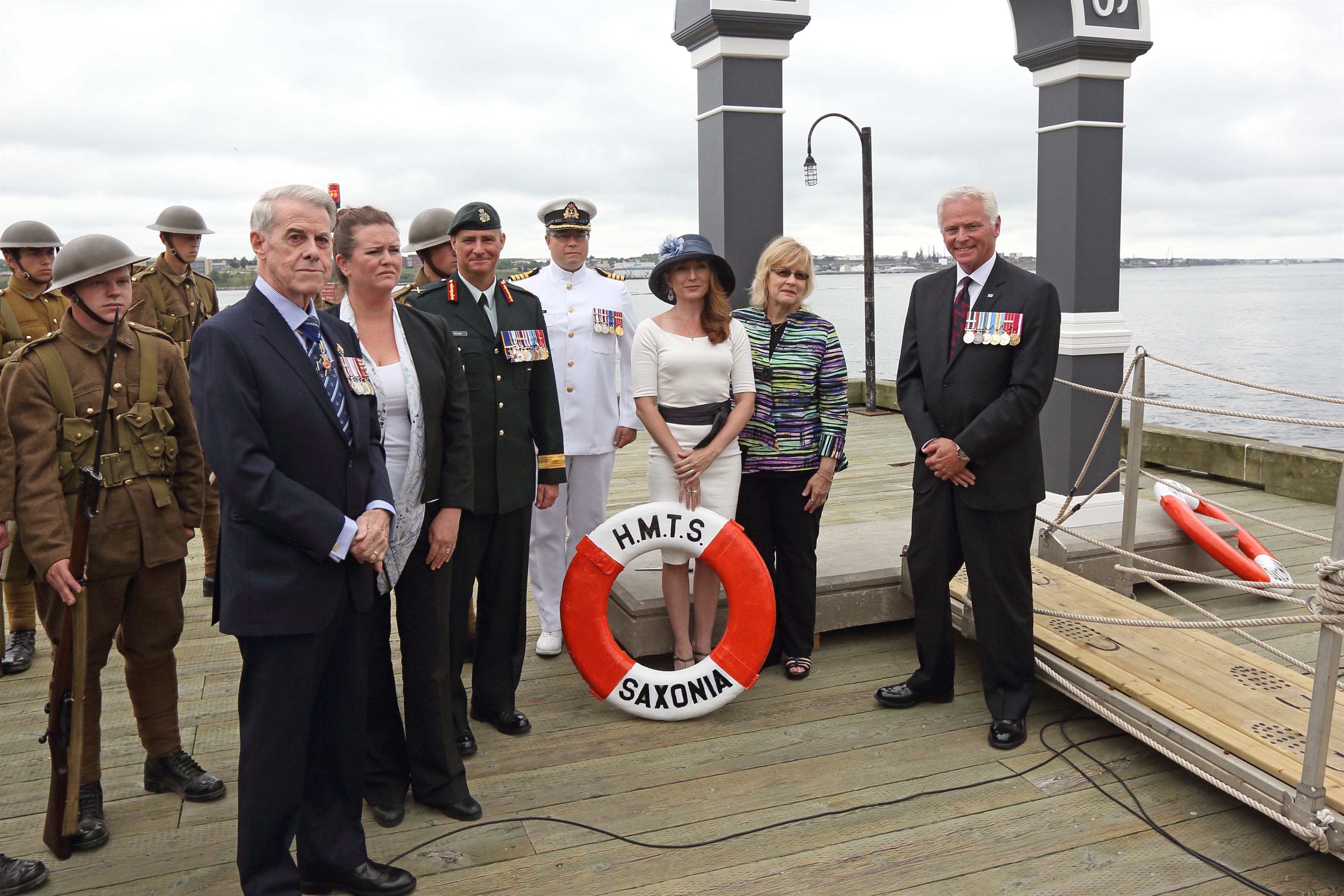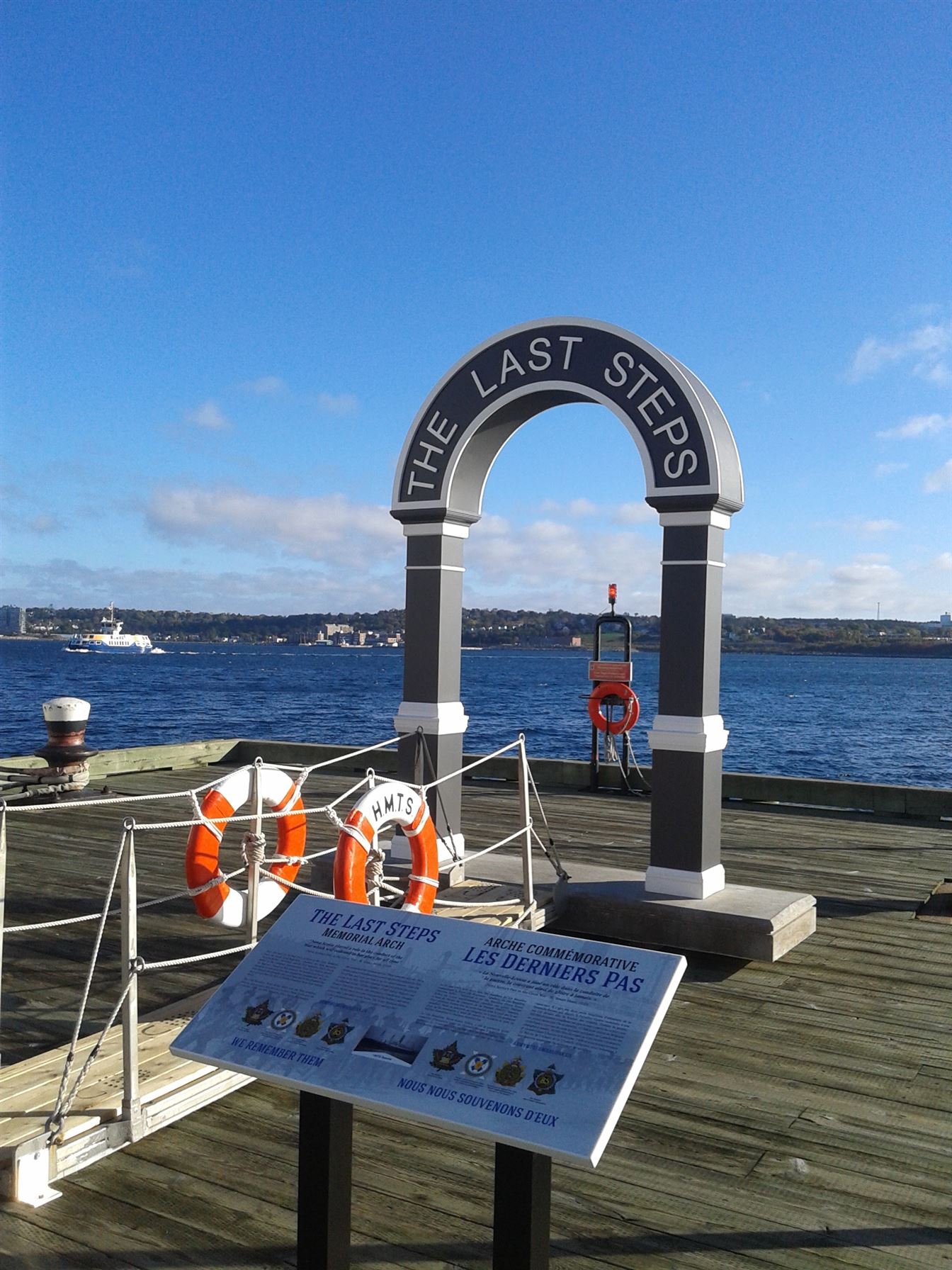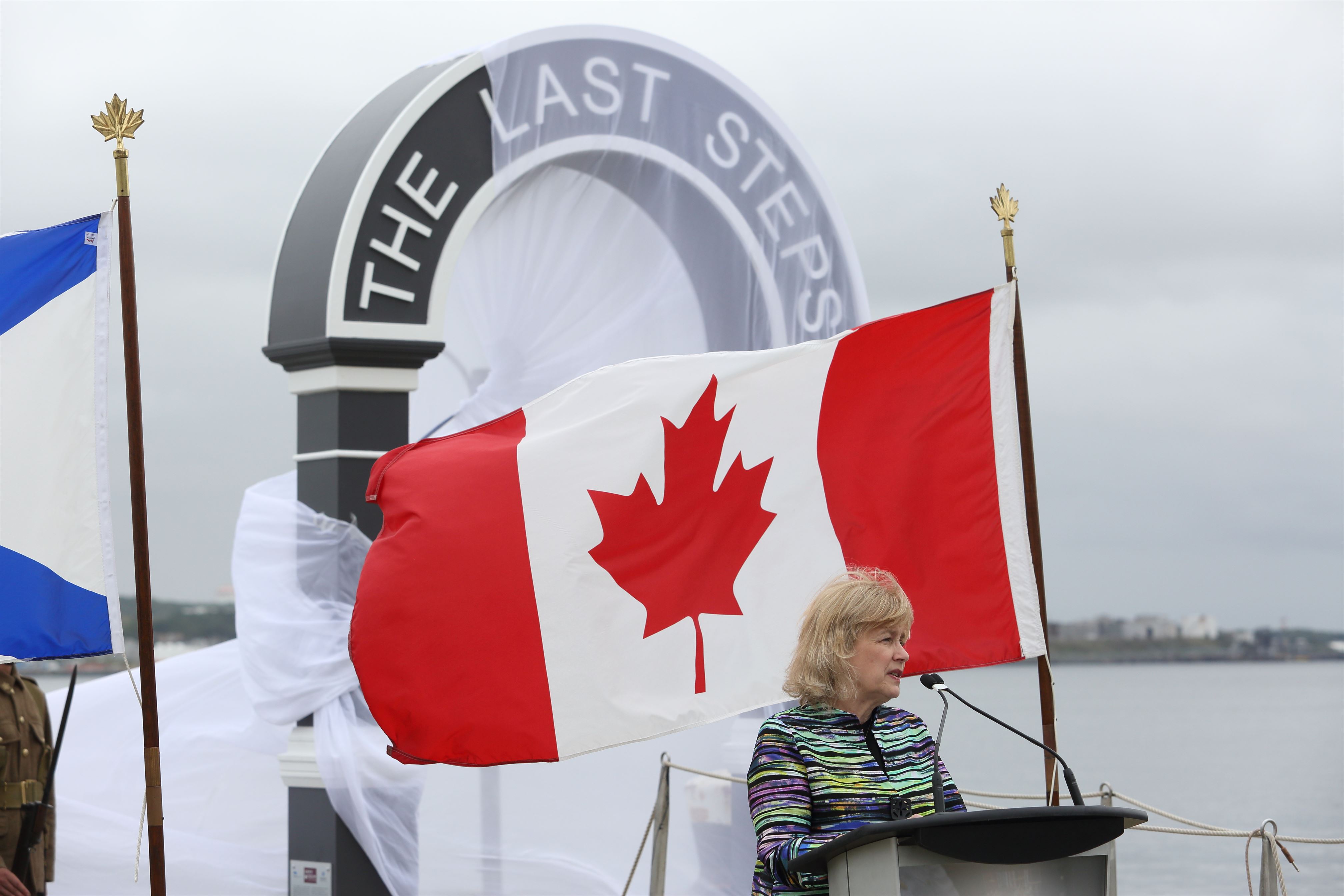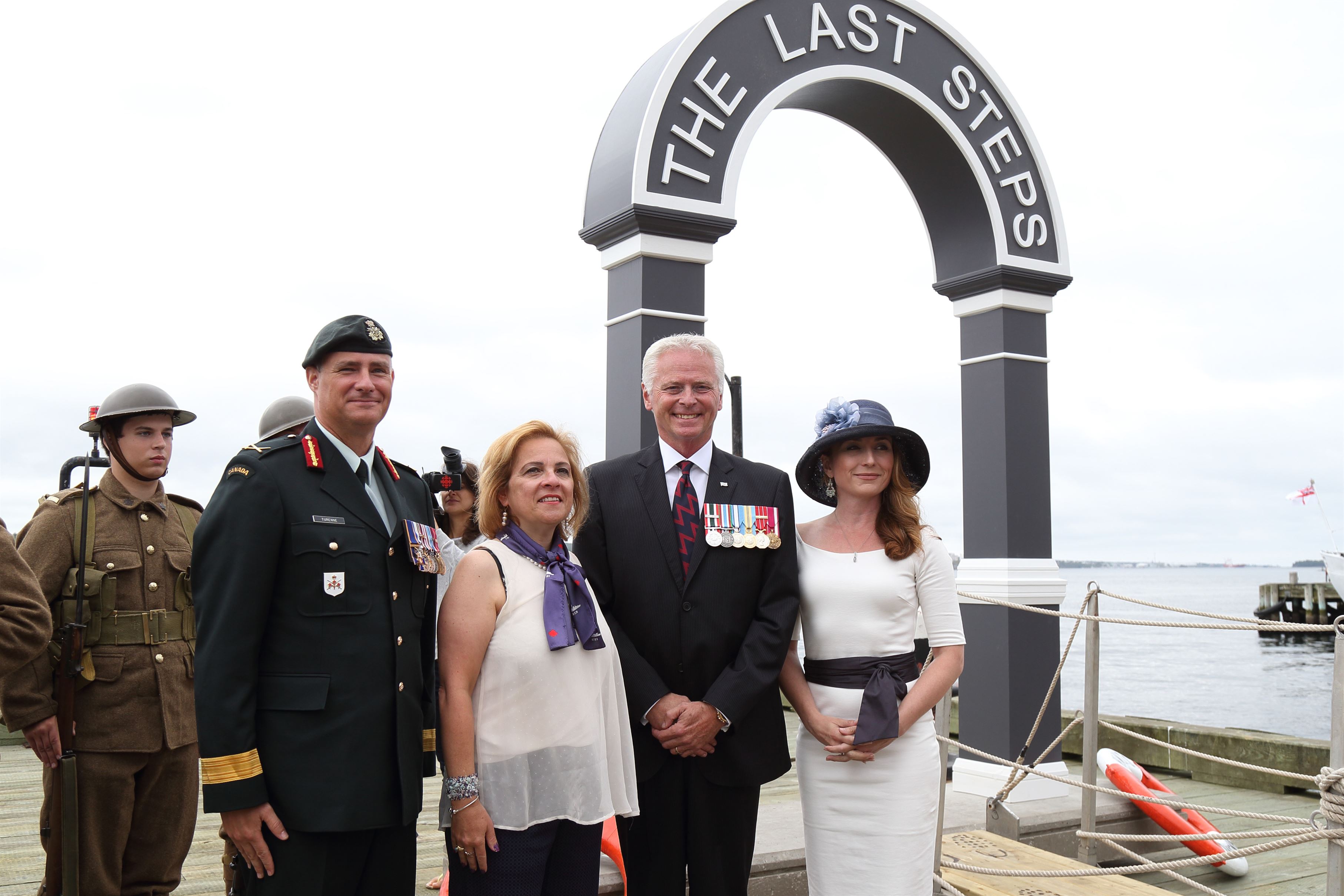On Friday, August 26, 2016, at 11 a.m., the Last Steps Memorial Arch was unveiled on a pier behind the Maritime Museum of the Atlantic. The Halifax waterfront is where thousands of Canadian men and women took their last steps as they embarked on ships to Europe during the First World War. There were around 350,000 Canadian men and women who boarded ships in Halifax to be taken overseas. About 60,000 never returned.
Corinne MacLellan teamed up with Ken Hynes, a retired army major, who is the volunteer curator at the Army Museum Halifax Citadel to develop the memorial. MacLellan and Hynes got advice or permission or funding from Halifax Waterfront Development, ACOA, Veterans Affairs Canada, the Halifax Foundation, the maritime museum, the city, Parks Canada and others. The artist Nancy Keating, who designed the memorial victory arch and a gangway, unveiled the conceptual drawing of the memorial on May 20, 2015.
The memorial received a refit from Coastal Woodworkers and was repositioned on June 7, 2022.



